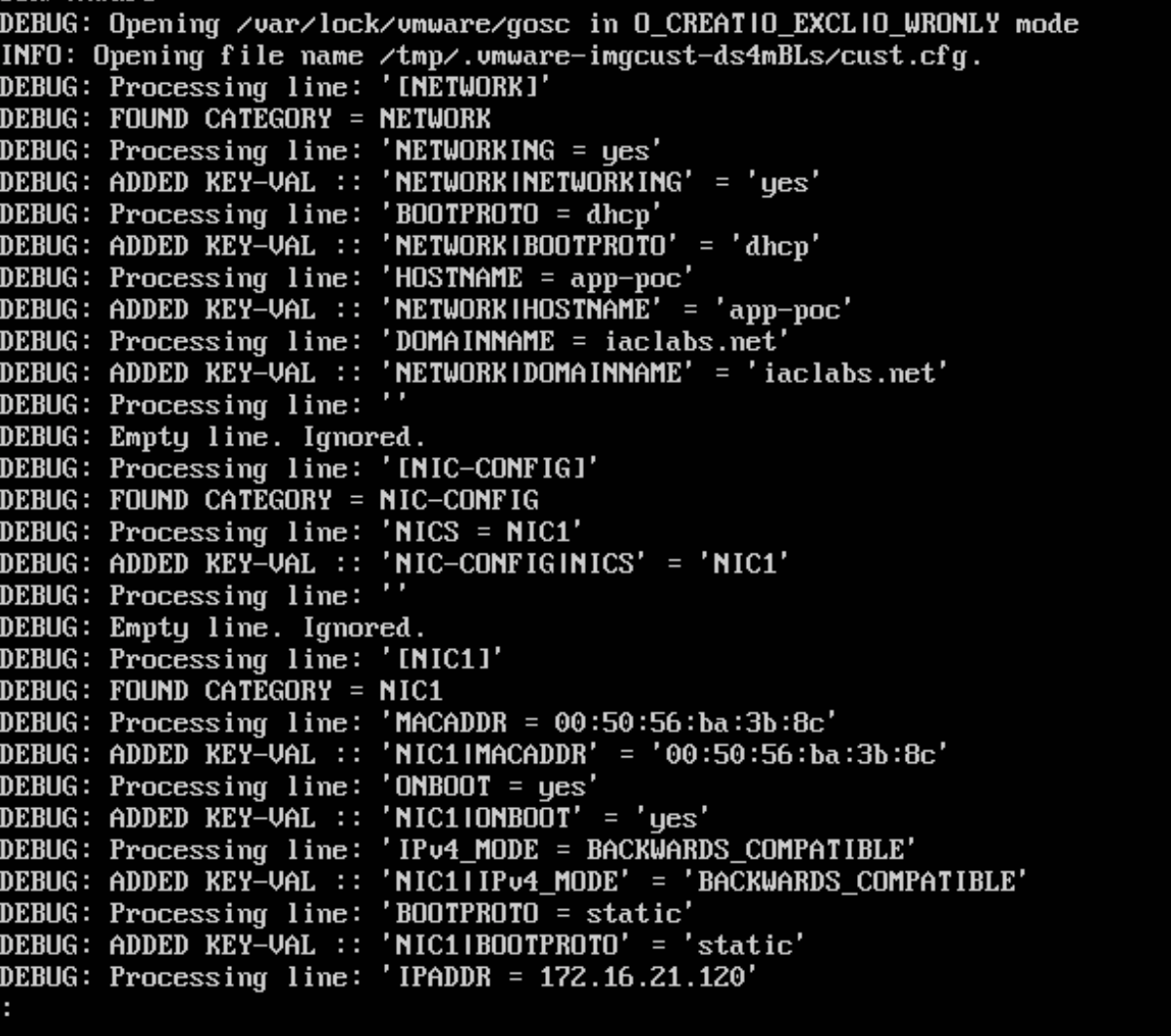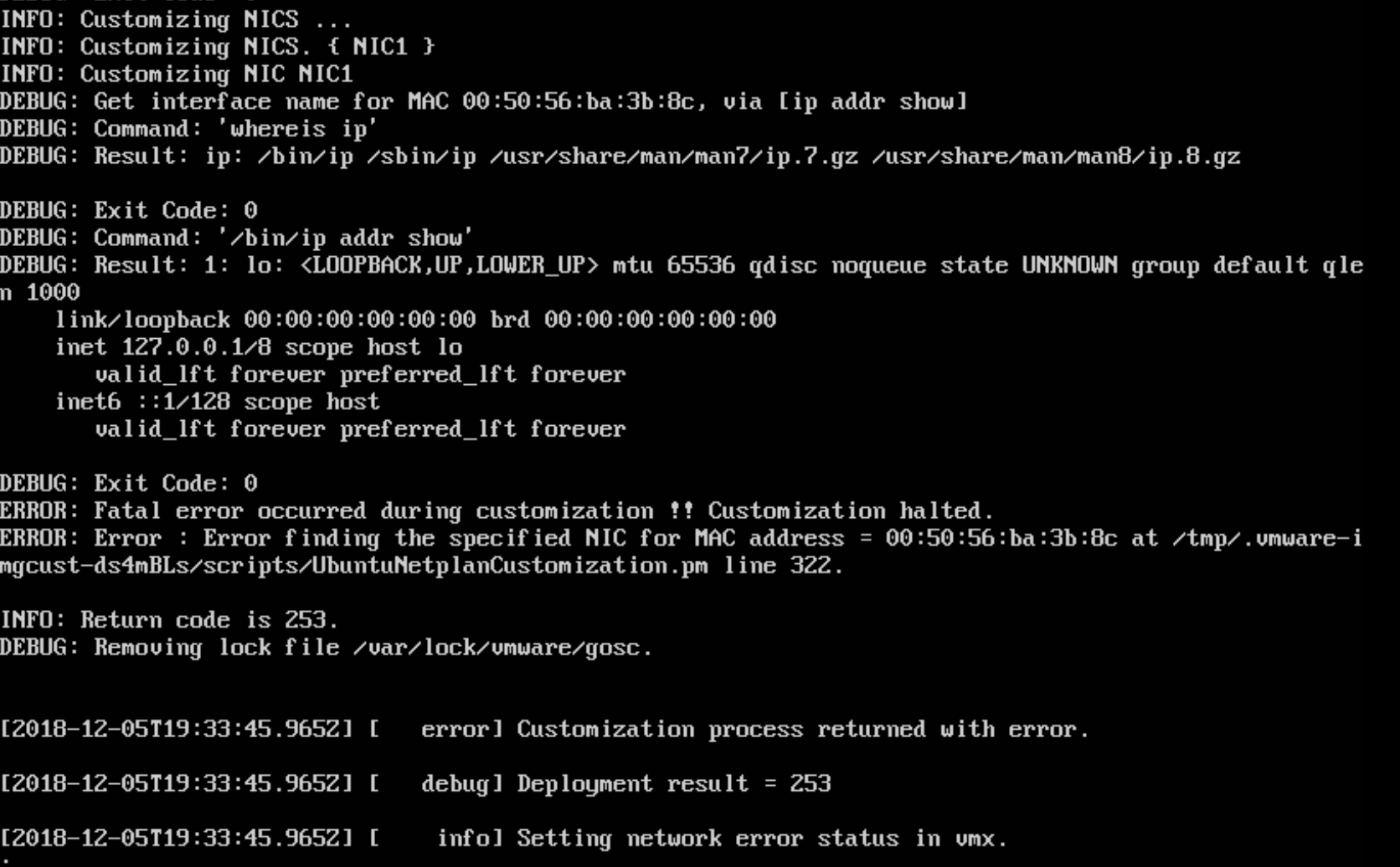Just adding my .02 here for reference. I am using vCenter 6.7 to start with. However, my scenario might be a bit different so let me explain.
The below involves Ubuntu 18.04 server w/out cloud-init.
I am building OVA images using Packer using the vsphere-iso builder. As part of the process I am having Packer remove the network interfaces as we may need to define different types of network adapter during provisioning. This OVA is uploaded to vCenter using Ansible as a new VM, remaining powered off. Then this VM is converted to a template via Ansible as well. When provisioning a VM the network adapter type is defined in which case the VM is spun up appropriately with the defined adapter type. The OS sees the adapter but the customization is failing during the netplan configuration.





Update
After following the recommendation above which lead to this KB https://kb.vmware.com/s/article/56409, I still experienced the same issue. However, switching from a vmxnet2 adapter type to a vmxnet3, the issue is not experienced. Is this a known thing with vmxnet2 adapters by chance?
Update
After looking at the VMware compatibility guide, it appears that vmxnet2 is not supported on Ubuntu 18.04 but was on 16.04.
Hello,
i have an issue when deploying ubuntu18.04 Preview on an esxi version 6.0.
open-vm-tools version: 2:10.2.0-3ubuntu2
After creating a new VM from a Template with pyvmomi, the machine does not get an IP address assigned, also in the VM properties->Network the options "Connect" and "Connect at power on" are not checked.
The file /etc/network/interfaces still exists on the system, but there was nothing written into the file.
I also tried to create a new Vm from a Template via the vSphere Client with the same result.
Ubuntu changed their default Networking to netplan with 17.10 https://lists.ubuntu.com/archives/ubuntu-devel-announce/2017-June/001215.html.
If you need any further infomation, logfiles, etc. please let me know.